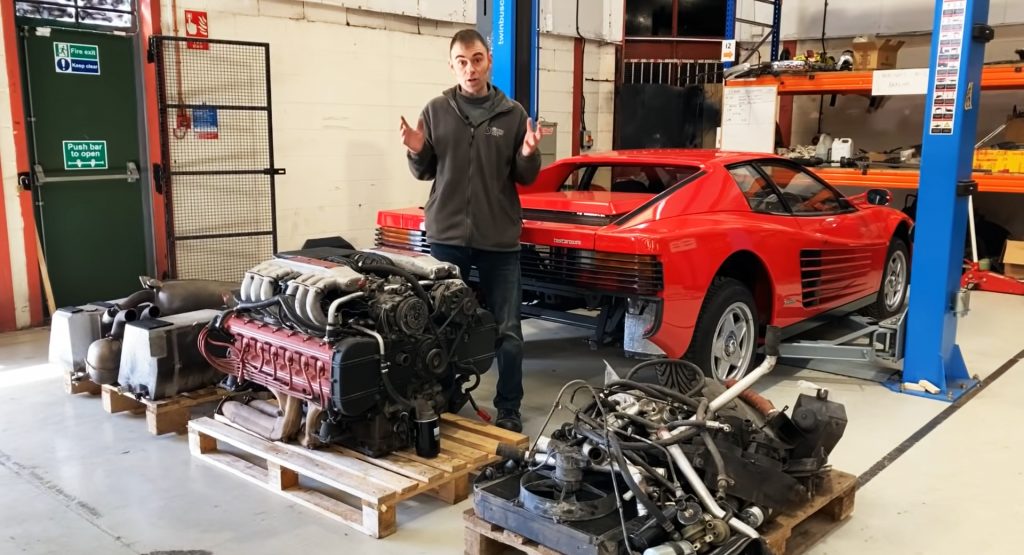Classic car ownership is an extremely rewarding hobby, but it can also be expensive and time-consuming when it comes to keeping the vehicle safe and reliable. EV conversions have become increasingly popular with people who want most of the pleasures of vintage metal without the drawbacks. But what if the conversion concerns a classic Ferrari?
Welcome to Electric Classic Cars which is removing a Ferrari V12 from a 1980s Testarossa to install an electric powertrain to create the “Teslarossa”, but is this really the solution to classic car ownership woes?
Read More: Charge Is Back With Its Futuristic 1967 Ford Mustang Electric
Electric Classic Cars’ workshop is located in the UK, and has converted dozens of vehicles to run on electric motors, including helping famous motorcycle racer Guy Martin build the world’s fastest electric car out of a Volkswagen Beetle.
In part one of the series, mechanic Richard already encounters many of the problems that most classic car owners are familiar with, including dead batteries, broken electrical systems, and service costs. As these vehicles get older, parts become more expensive and difficult to find (if you can find them at all).
A Bit of History
The Testarossa has long been maligned as a soft grand tourer, a far cry from the original race cars that carried the Testa Rossa name in the late 1950s and early 1960s. The Testarossa’s 4.9-liter flat-12 produced 385 horsepower when it debuted in 1984. Impressive for the time, but shunting around a chassis that weighs upwards of 1,700kg (3,760 pounds), that number isn’t so impressive.
As the engine is removed from the vehicle, the weight savings are already apparent. The engine alone weighs 420kg (925 lbs), and there’s more to be lost in other items as well. Of course, whether this translates into a weight reduction after you take into account the batteries for the electric powertrain, remains to be seen.
Sacrilege or Savings?
Whether or not you agree with the replacement of the sonorous Flat-12 with a silent powertrain, it’s hard to argue against the cost savings of ditching an extremely complicated engine, and replacing it with the least complicated motor of all – electric. Richard doesn’t say exactly which motor and battery capacity he intends to use, but it sounds that it might be sourced from a Tesla. We’ve reached out to him and will update this post once he gets back to us.
While in the past, a supercar with an expensive repair bill might be destined for a Chevy 350 or LS swap, in theory, this new generation of EV swaps not only offers benefits to the environment but also to performance and cost as well.
Any chance we can buy that spare V12 though?



